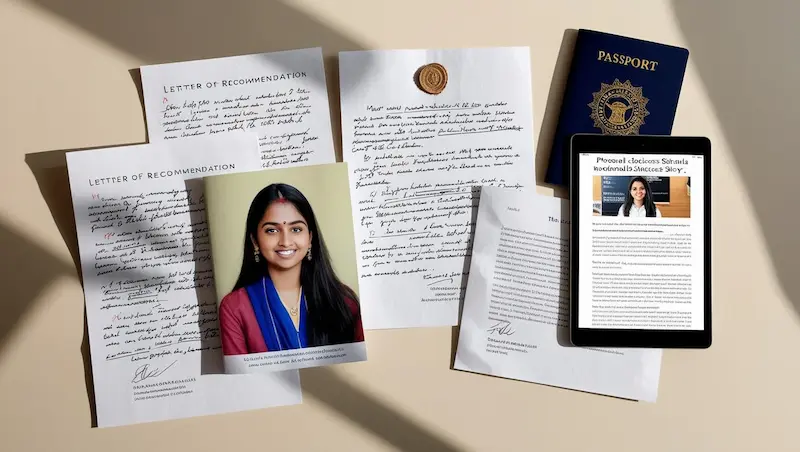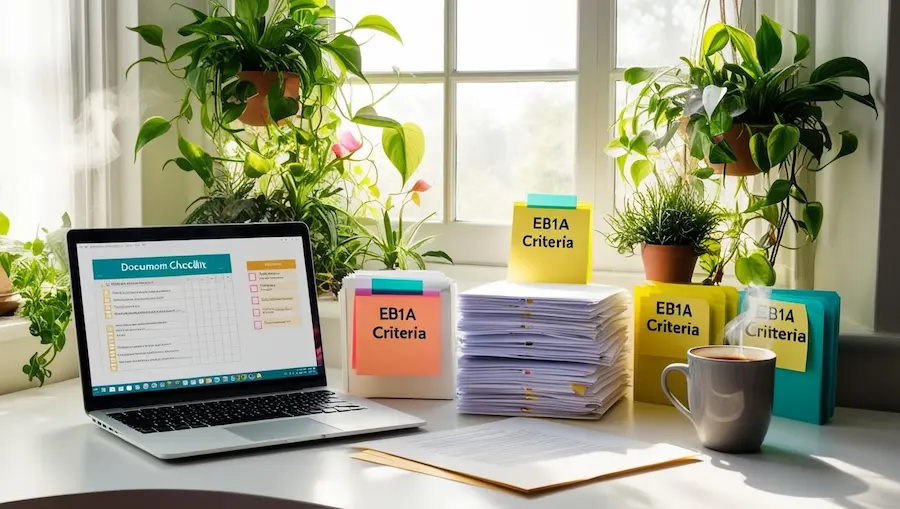If you’re here, you must be smack in the middle of applying for an EB1A visa. That tells us a couple of things right off the bat—you’re probably exceptional at what you do, and you’re looking to bring that talent to the U.S. That’s amazing. Seriously.
But let’s be real: the paperwork? Not so amazing.
The EB1A petition process can feel overwhelming. Like, where do you even start? What counts as “extraordinary” proof? And how do you make sure you’re showing up strong on paper without sounding like you’re just ticking boxes?
That’s what we’re diving into today—how to gather the right kind of documentation that actually works for your EB1A petition. Think of this as your marketing plan, but for immigration. It’s about positioning yourself, telling your story, and backing it up with solid, strategic proof.
First Things First: What’s the EB1A About?
Here’s the gist: the EB1A visa is for people who are at the top of their game. Whether you’re in science, arts, education, athletics, or business, the U.S. wants to know you’ve done something remarkable. Not just once—but consistently.
If you’ve won a big, internationally recognized award like a Nobel Prize, that’s your golden ticket. But for most folks, the route involves meeting at least three out of ten specific criteria set by USCIS.
And here’s the key: it’s not just about meeting them—it’s about proving you meet them with the kind of evidence that speaks loud and clear.
Breaking Down the EB1A Criteria (Without the Legal Jargon)
Let’s run through the ten categories, plain and simple:
- Awards and Honors
Got trophies, medals, or certificates for your work? If it’s a big deal in your field, it counts. - Membership in Elite Organizations
Are you a part of a group that only accepts top-tier professionals? That helps make your case. - Media Coverage About You
Have you been featured in articles, interviews, or reports? If people are writing about your work, that’s great evidence. - You Judge Others in Your Field
Been invited to be on a panel or judge a competition? That’s a sign you’re respected for your opinion. - Original Contributions
Think big ideas, innovations, or solutions that have made waves. This is about real impact. - Published Articles
Have you written for journals, industry publications, or even major blogs? Authorship counts. - Exhibitions and Showcases
For artists and creatives—have your works been displayed or showcased publicly? - Leading Roles
Held senior or influential positions in notable organizations? That shows trust and leadership. - High Salary or Compensation
If you’re earning way above average in your industry, that’s a measurable sign of value. - Commercial Success (for performers/creators)
Have your projects brought in serious revenue or fan following? Show the numbers.

Now, Let’s Talk Documentation Strategy
Here’s where most folks get tripped up: you might have the achievements, but now you’ve got to prove them in a way that USCIS understands and accepts.
Start With a Plan
Before you gather a single document, map out which three (or more) criteria you’re going to focus on. Pick the ones you can support with the strongest, clearest evidence.
Organize By Category
Think of this like building a pitch deck for yourself. Set up folders (Dropbox, Google Drive, whatever you use) for each criterion. Dump everything in there first, then curate.
Focus on Impact, Not Volume
More isn’t always better. Instead of 50 articles mentioning you, pick the 5 that highlight your work the best. Quality > quantity every time.
Get Solid Letters of Recommendation
Reach out to respected people in your industry—folks who can genuinely speak to your achievements. Their letters should be specific, not generic fluff.
Pro tip: Avoid letters that sound like a LinkedIn endorsement. You want depth—stories, examples, data if possible.
Tell a Cohesive Story
You’re not just handing over documents—you’re telling the story of your career. So when your evidence is pulled together, it should have a clear narrative. What have you done, why does it matter, and what’s the impact?
A Few Extra Tips From Someone Who’s Been in the Weeds
- Don’t Oversell, Don’t Undersell
Be proud of your achievements, but stay grounded. USCIS sees through exaggeration—but they also see when people are too humble. - Professional Guidance Helps—A Lot
Even if you’re good with paperwork, a good immigration attorney or expert letter writers like Green Card For Alien can help frame your case in the best light. Think of them like your editor. - Get Feedback Before You File
Ask a colleague to read your petition. If they don’t “get it,” USCIS probably won’t either. Simplicity and clarity win. - Keep Everything Easy to Verify
Link to articles, include screenshots, or scan original documents. USCIS wants to verify what you’re saying—and the easier you make it, the smoother your review process.

Real Talk: This Takes Time
Gathering documentation for an EB1A isn’t a weekend project. It takes planning, persistence, and a bit of detective work tracking down old files and articles. Give yourself time.
But here’s the thing—this process is also a chance to reflect on everything you’ve done. You’ll probably surprise yourself with just how far you’ve come.
Last Word
If you’ve done extraordinary work, you deserve a shot at making your mark in the U.S. The EB1A visa isn’t just for the famous. It’s for the quietly brilliant. The innovators. The leaders. The creatives.
So if that’s you—if you’re nodding along and thinking, “Yeah, I’ve done that”—then start gathering your story. One piece of evidence at a time.
And remember, you’re not alone in this. Whether it’s a lawyer, a mentor, or someone like us sharing a checklist, help is out there.
Now go on—start building your case. You’ve got this.

